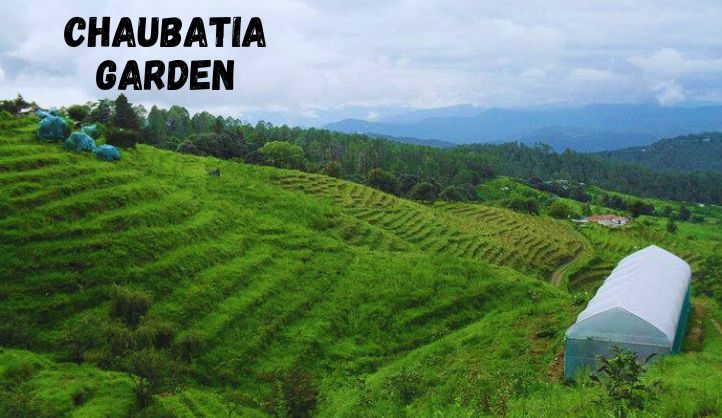Nestled in the lap of the Himalayas, Chaubatia Gardens is a captivating destination that offers a blend of natural beauty, tranquility, and horticultural splendor. Located near Ranikhet in the Indian state of Uttarakhand, this enchanting garden is a must-visit for nature lovers, avid gardeners, and anyone seeking a peaceful retreat away from the hustle and bustle of city life. In this comprehensive guide, we will delve into the history, attractions, flora, and travel tips to help you make the most of your visit to Chaubatia Gardens.
History of Chaubatia Gardens
Chaubatia Gardens, also known as Chaubatia Orchards, were established in the 1860s during the British colonial era. The British were captivated by the region’s temperate climate and picturesque landscapes, which reminded them of their homeland. To make the area more habitable, they developed these gardens, planting a variety of fruit trees and ornamental plants. Over the years, Chaubatia Gardens has evolved into a renowned horticultural hub, attracting visitors from all over the world.
How to Reach
It is easily accessible from Ranikhet, which is well-connected to major cities in Uttarakhand and neighboring states.
By Air
The nearest airport is Pantnagar Airport, located about 115 kilometers from Ranikhet. From the airport, you can hire a taxi or take a bus to reach Ranikhet and then proceed to Chaubatia Gardens.
By Train
The nearest railway station is Kathgodam, approximately 88 kilometers from Ranikhet. From the railway station, you can hire a taxi or take a bus to reach Ranikhet.
By Road
Ranikhet is well-connected by road to major cities in Uttarakhand. Regular bus services are available from Delhi, Nainital, and other nearby towns. From Ranikhet, Chaubatia Gardens is a short drive away, and local taxis and buses are readily available.
Attractions at Chaubatia Gardens
1. Orchards and Fruit Gardens
One of the main attractions of Chaubatia Gardens is its expansive orchards. Spread over an area of 600 acres, the gardens are home to a wide variety of fruit trees, including apples, peaches, plums, apricots, and chestnuts. The sight of these orchards in full bloom during the flowering season is nothing short of magical. Visitors can stroll through the orchards, enjoy the fresh mountain air, and even sample some of the delicious fruits.
2. Floral Displays
Chaubatia Gardens boasts an impressive collection of flowering plants and ornamental species. The garden is a riot of colors during the spring and summer months when flowers like rhododendrons, roses, marigolds, and daisies are in full bloom. The well-maintained flowerbeds and meticulously designed landscapes make it a paradise for photographers and nature enthusiasts.
3. Panoramic Views
Perched at an altitude of 1,800 meters, Chaubatia Gardens offers breathtaking panoramic views of the surrounding Himalayan ranges. On clear days, visitors can catch glimpses of prominent peaks such as Trishul, and Nanda kot. The garden’s elevated location provides a perfect vantage point to soak in the majestic beauty of the mountains and the lush valleys below.
4. Herbal Research Center
The gardens also house a Herbal Research Center, where various medicinal plants and herbs are cultivated and studied. This center is a treasure trove of knowledge for those interested in traditional medicine and herbal remedies. Visitors can learn about the diverse range of medicinal plants and their uses, making it an educational experience as well.
5. Botanical Gardens
In addition to fruit orchards and floral displays, Chaubatia Gardens features a botanical garden that showcases a wide variety of plant species. This section of the garden is dedicated to the conservation and study of native and exotic plants. It is a great place for botany enthusiasts and researchers to explore and learn about different plant species.
Flora and Fauna of Chaubatia Gardens
Chaubatia Gardens is renowned for its rich biodiversity, with a plethora of plant species thriving in its fertile soil and favorable climate. The gardens are home to a wide range of flora, including:
- Fruit Tree – Apples, peaches, plums, apricots, and chestnuts.
- Flowering Plants – Rhododendrons, roses, marigolds, daisies, and dahlias.
- Medicinal Plants – A variety of herbs and medicinal plants used in traditional medicine.
- Ornamental Plants – Numerous ornamental species that add to the garden’s aesthetic appeal.
In addition to its diverse plant life, Chaubatia Gardens is also a haven for bird watchers. The gardens attract a variety of bird species, making it a paradise for ornithologists and bird enthusiasts.
Best Time to Visit Chaubatia Gardens
The best time to visit Chaubatia Gardens depends on what you want to experience:
Spring (March to May) This is the ideal time to witness the gardens in full bloom. The weather is pleasant, and the flowers are at their vibrant best.
Summer (June to August) Although it can be a bit warmer, summer is a great time to enjoy the fruit harvest. The orchards are laden with ripe fruits, and visitors can indulge in fresh, juicy produce.
Autumn (September to November) The weather is cool and crisp, making it perfect for leisurely walks and enjoying the scenic beauty of the gardens.
Winter (December to February) While the gardens are less colorful, winter offers a different charm with snow-capped peaks in the backdrop and a serene, peaceful atmosphere.
Tips for Visiting Chaubatia Gardens
- Wear Comfortable Footwear – The gardens are vast, and you will be doing a lot of walking. Comfortable footwear is essential.
- Carry Water and Snacks – While there are some eateries near the gardens, it’s a good idea to carry water and snacks, especially if you plan to spend several hours exploring.
- Respect the Environment – Chaubatia Gardens is a pristine natural area. Ensure you do not litter and respect the plants and wildlife.
- Photography – The gardens offer numerous picturesque spots, so don’t forget to carry your camera or smartphone to capture the beauty.
- Local Guides – Consider hiring a local guide to get detailed information about the plants, history, and significance of the gardens.
Conclusion
Chaubatia Gardens is more than just a tourist destination; it is a haven of natural beauty, tranquility, and horticultural wonders. Whether you are a nature enthusiast, a photographer, or simply looking for a peaceful retreat, Chaubatia Gardens offers something for everyone. With its stunning landscapes, rich biodiversity, and serene ambiance, it is a place that will leave you enchanted and rejuvenated. So pack your bags, head to the Himalayas, and immerse yourself in the mesmerizing beauty of Chaubatia Gardens.
FAQs About Chaubatia Gardens
1. What is Chaubatia Gardens famous for?
Chaubatia Gardens is renowned for its expansive orchards, diverse flora, stunning panoramic views of the Himalayas, and tranquil ambiance. The gardens are particularly famous for their apple orchards and a wide variety of other fruit trees, flowering plants, and medicinal herbs.
2. Where is Chaubatia Gardens located?
Chaubatia Gardens is located near Ranikhet in the Indian state of Uttarakhand. It is situated at an altitude of 1,800 meters above sea level, offering breathtaking views of the surrounding Himalayan ranges.
3. How do I reach Chaubatia Gardens?
You can reach Chaubatia Gardens via Ranikhet, which is well-connected by road, rail, and air:
- By Air: The nearest airport is Pantnagar Airport, about 115 kilometers away.
- By Train: The nearest railway station is Kathgodam, approximately 88 kilometers from Ranikhet.
- By Road: Ranikhet is connected by regular bus services from Delhi, Nainital, and other nearby towns. From Ranikhet, Chaubatia Gardens is a short drive away.
4. What is the best time to visit Chaubatia Gardens?
The best time to visit depends on what you want to experience:
- Spring (March to May): Ideal for witnessing the gardens in full bloom with vibrant flowers.
- Summer (June to August): Great for enjoying the fruit harvest season.
- Autumn (September to November): Offers cool weather and beautiful scenic views.
- Winter (December to February): Provides a serene atmosphere with snow-capped peaks in the backdrop.
5. Are there any entry fees for visiting Chaubatia Gardens?
As of the latest information, there is no entry fee to visit Chaubatia Gardens. However, it is advisable to check for any updates or changes in entry policies before planning your visit.






